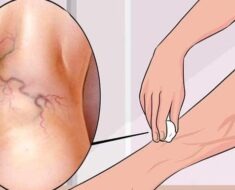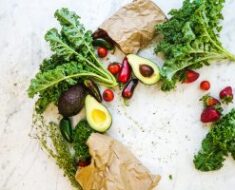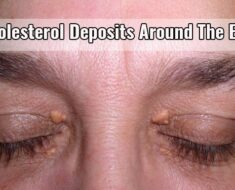
Low carb diets like the ketogenic diet are recommended for quick weight loss, and it’s for good reason.
However, there’s more to the keto diet than just sticking to low carb, moderate protein, and high fat intake.
In order to experience all the wonderful benefits of this type of diet, you first need to know how it works, and that’s where ketosis comes in.
After all: there’s no keto without ketosis.
So this post will walk you through exactly what ketosis is so you can start losing weight and feel great again.
What is Ketosis?
Before diving straight in to what ketosis is and how it works, you first need to understand how the body converts macronutrients (carbs, fat, protein) into energy.
The ketogenic diet is based around the idea that the human body was designed to operate more efficiently burning fat instead of sugar (glucose from carbohydrates).
When following a ketogenic diet, you drastically reduce your carbohydrate intake and heavily increase your fat intake. This results in a new daily caloric intake consisting of 70% fat, 25% protein, and only 5% carbohydrates.
Traditionally, the body’s main source of energy comes from carbohydrates in the form of glucose (sugar). If you have have sufficient amounts of glucose, your body will choose it over other sources (fat, muscle) to get the energy it needs.
However, since the keto diet reduces your daily carbohydrate intake from 45-65% of your daily calories to a mere 5%, you are left will insufficient amounts of glucose to power your body.
Due to this, your body has to turn to another source of energy, and in this case, it’s fat.
This is where ketosis comes in to play.
Ketosis
Ketosis is a normal metabolic state that occurs when you deprive your body of carbohydrates. Since you aren’t consuming enough carbohydrates to fuel your body sufficiently, your glycogen stores, the excess glucose stored in your liver, become empty.
When this occurs, your body needs to find a new energy source, so it starts using fat to fuel itself. Your liver starts breaking down fat and glycerol through a process called beta-oxidation.
These fatty acids are then broken down into ketones through a process called ketogenesis.
So essentially, consuming too few carbohydrates forces your body to turn to fat for energy. As a result, the fat gets broken down into ketones and once you reach ketosis, these become your body’s main source of energy.
Ketones
Ketones are the energy-rich substance leftover when your body breaks down fat. This is similar to your body breaking down carbohydrates into glucose to then use as energy.
There are 3 different types of ketones:
- Acetoacetate: This is the first ketone created during ketogenesis, which is when the breakdown of fatty acids creates ketone bodies.
- Beta-Hydroxybutryate (BHB): Acetoacetate then forms this ketone body. Although not technically a ketone due to chemical structure, BHB is still considered one of the three ketones when referring to the ketogenic diet.
- Acetone: This ketone is created as a side product of acetoacetate and is the simplest, least-used of the 3 ketone bodies that breaks down quickly. Bad breath on the keto diet is a result of this ketone.
Once the ketone levels in your bloodstream are high enough, your body enters the metabolic state of ketosis.
How to Reach Ketosis
Since you won’t start reaping any of the benefits of the ketogenic diet until you’re in a state of ketosis, you kinda need to know how to get there.
Following these “rules” will help you reach ketosis and start experiencing all that ketosis and the keto diet have to offer.
Restrict Carbohydrates
First and foremost, it’s crucial you understand that reaching ketosis can only be done through a starvation of carbohydrates, which is NOT the same as a starvation of calories.
Your body can’t go into ketosis while glucose is still in supply, so you need to keep carbohydrates at 20g (to 30g) or less each day. At the same time, you have to supplement the rest of your diet with high fat and moderate protein intake.
If you’re wondering what types of meals you can eat on keto, try out some of these:
- 11 Delicious Keto Crockpot Recipes with Macros
- 15 Mouthwatering Vegetarian Keto Recipes You Need in Your Life
- 23 Insanely Good Keto Desserts to Satisfy Your Sweet Tooth (yes, you CAN eat desserts on keto!!)
Monitor Protein Intake
Your daily protein intake should not exceed 25% of your daily caloric intake. Consuming too much protein can actually result in it being converted into glucose.
And as you know, too much glucose in your bloodstream will prevent you from reaching ketosis.
Eat Plenty of Healthy Fats
Not all fatty foods are created equal!
In order to reach ketosis, 70% of your daily caloric intake needs to come from fats.
What you need to understand is there is a difference between healthy and unhealthy fat, and it’s important you’re consuming the healthy type.
Some healthy fats and protein sources to consume are:
- Avocados
- Coconut oil
- Fish
- Nuts
- Olive oil
- Poultry
- Nut butters
- Seeds (sunflower, etc.)
- Whole eggs
You can also consume red meat, dairy products, and other fatty foods, but calories and sodium levels are among several factors to consider when choosing the fats you consume.
Stay Hydrated

Often times people on low carb diets like keto tend to experience dehydration. This in turn causes several other problems, like constipation and headaches.
The main reason being that carbohydrates are stored with water which your body then uses throughout the day to stay hydrated.
Since the keto diet has a strict “minimal carbs allowed only” policy, there isn’t any excess water stored up to use later.
To combat dehydration, make sure you’re drinking at least 90 ounces of water daily. I’ve found that using a Hydro Flask, especially with the flip-top, ensures I’m reaching my daily water goal while keeping my water ice cold all day.
Consider Intermittent Fasting
Intermittent fasting is when you don’t eat anything for 16 hours and eat all your meals during an 8-hour window.
Since you aren’t eating anything for 16 hours, your body is quickly using up your glycogen stores to fuel itself. Once they’re empty, your body is able to turn to fat to produce ketones for energy.
Intermittent fasting is a great way to kickstart ketosis and has a bunch of other great benefits as well.
Start Exercising
Similar to fasting, exercising helps to quickly deplete glycogen stores since your body needs a way to fuel the workout.
Additionally, exercise is part of any healthy lifestyle, so incorporating it can only yield good results, including extra weight loss.
Take Supplements
Exogenous ketones are a supplement used to speed up ketosis. A simple explanation of how they work is they tell your body to start using ketones instead of glucose as its main source of energy.
With that being said, you should definitely try the other options above before taking any supplements. Why spend money if you don’t have to!
How to Tell If You’re In a State of Ketosis
Now that you’ve learned how to reach ketosis, you probably want to know how to tell if you’re actually in ketosis.
The following are signs that your body is in a state of ketosis:
- Bad breath: Also known as keto breath, the production of the ketone acetone causes bad breath, as it’s excreted through the breath. Luckily, this is only a short term problem.
- Dry mouth: Due to frequent urination and just sweating in general, you are losing a lot of electrolytes, which can cause dry mouth. To ensure you’re consuming enough electrolytes, try adding Keto Perfect Electrolytes to your water. It contains 0 calories and 0g sugar, so it’s safe to drink on keto. You should avoid power drinks like Gatorade with electrolytes if they contain sugar and empty calories, which in most cases they do.
- Frequent urination: The ketone body called acetoacetate causes frequent urination and when paired with increased water consumption to prevent dehydration, this symptom is a given.
- Reduced hunger & increased energy: The most noticeable signs that you’ve entered ketosis are increased energy and decreased hunger.
These are all signs that you’ve finally reached ketosis.
However, it’s nice knowing for sure if you’re in ketosis, which is why many people opt to measure their ketones as well. This is especially helpful if you want to know what state of ketosis you’re in.
Spoiler alert: you want to aim for optimal ketosis.
Measuring Ketones for Optimal Ketosis
When measuring ketone levels, it’s best to do it in the morning on a fasted stomach before eating.
The results may be a little really confusing to understand if you have no idea what they mean. Use these notes to help you interpret them.
Ketones are measured in millimoles per liter, or mmol/L. There’s a lot of science behind calculating this, so just know the testing methods for measuring ketones do all the math for you, so you don’t really need to worry about it.
Reading your ketone level results:
- < 0.5 mmol/L: Less than 0.5 mmol/L means you are NOT in ketosis, so you won’t experience any of the great benefits associated, including fast weight loss.
- 0.5-1.5 mmol/L: Being in this range is considered light nutritional ketosis, meaning you’ll be able to lose weight, just not as effectively as in optimal ketosis.
- 1.5-3.0 mmol/L: This range is what’s known as optimal ketosis. If you’re looking to lose weight, this is the range you want your ketone levels to be in.
- > 3.0 mmol/L: Anything in this range is not necessary, as it won’t yield any better results than being in optimal ketosis. If your ketone levels are > 10.0 mmol/L, you may experience ketoacidosis, which can be extremely dangerous. While it’s not common to reach such high ketone levels, if it occurs, you should seek professional medical help right away.
This ketone level guide will be handy if you decide to perform one of the below tests to monitor your ketones.
These will give a more accurate idea of how many ketones your body is producing and better help you tell if you’re in ketosis.
Urine Test
The cheaper of the two ketone tests is using urine test strips to determine the level of ketones in your urine. These tell you the amount of ketones your body is expelling.
While these don’t cost a lot of money, they don’t provide the most reliable results.
Blood Glucose Meter
The second, more reliable method for testing ketones is running a keto blood test using a blood glucose meter. As the name suggests, this method tests ketone levels in your blood, which provides significantly more accurate readings.
Using a blood glucose meter is more expensive, especially if you test too frequently, but it will give you better results.
How Long Does It Take to Reach Ketosis?

Since everybody is different and the exact steps taken to reach ketosis differs from one person to the next, it’s impossible to give a definitive answer to this.
However, if you follow the steps above teaching you how to reach ketosis, you’ll get there.
Again, fasting and incorporating exercise will quickly deplete your glycogen stores and force your body to turn to fat, ultimately leading you to reach a state of ketosis.
Benefits of Ketosis
Being in a metabolic state of ketosis brings about many positive changes other than just easy weight loss. Here are some of the other great benefits of ketosis to help seal the deal.
Heightened Mental Focus
Relying on glucose to fuel your body means you’re going to have spikes and crashes in energy levels, as glucose isn’t the most stable energy source.
On the other hand, ketones are a relatively consistent source of energy, meaning your brain is constantly getting the energy it needs. This leads to increased mental focus, and overall less crashes throughout the day.
Improved Physical Performance
Similar to the reasoning behind the heightened mental focus, ketosis can improve your physical performance. No sugar crashes and a stable energy source make it easier for you to perform physical activities without tiring out quickly.
It should be noted there are different types of the ketogenic diet, like the Targeted Ketogenic Diet (TKD) and High-Protein Ketogenic Diet, for highly active people, that still yield all the great benefits of the Standard Keto Diet (SKD).
Treats Epilepsy
The ketogenic diet was created in the 1920s to help treat epilepsy since medications don’t always work.
By replacing glucose with ketones as the body’s main energy source, certain chemicals are produced that help to prevent seizures. This ultimately results in people with epilepsy not having to take as many medications.
Whether you’re doing your research before starting the ketogenic diet or having difficulty reaching ketosis, knowing what ketosis actually is and how to reach it is important.
Now you know how your body is fueled on the keto diet and why following the steps outlined in this post will help you reach the metabolic state of ketosis.





